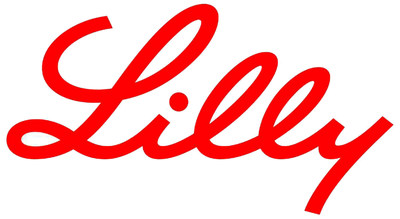Data support baricitinib’s ongoing Phase 3 program and potential to be the first approved medicine for people living with alopecia areata (AA)
Data support baricitinib's ongoing Phase 3 program and potential to be the first approved medicine for people living with alopecia areata (AA)
INDIANAPOLIS, Oct. 30, 2020 /PRNewswire/ -- Eli Lilly and Company (NYSE: LLY) and Incyte (NASDAQ: INCY) announced today new data for baricitinib (marketed as OLUMIANT®) will be presented at the annual Fall Clinical Dermatology meeting taking place virtually October 29-November 1, 2020. The data underscore Lilly's commitment to providing medicines for dermatologic diseases that have high unmet need, including alopecia areata (AA). AA is an autoimmune disorder that can cause unpredictable hair loss on the scalp, face and other areas of the body.
Data from the Phase 2 portion of BRAVE-AA1, an ongoing Phase 2/3 study evaluating the safety and efficacy of baricitinib in adult patients with AA will be shared. The study included adult patients with a current episode of AA lasting for 6 months to 8 years with a Severity of Alopecia Tool (SALT) score ≥50 (i.e. who had ≥50% scalp hair loss) and no spontaneous improvement over six months prior to screening. In the Phase 2 portion, patients were randomized to oral baricitinib 1-mg, 2-mg, 4-mg or placebo once daily, in order to identify up to two doses for the Phase 3 portion. Interim analyses were conducted after patients completed 12 and 36 weeks of treatment, the latter for the primary endpoint of the Phase 2 part of the study. At Week 36, the proportion of patients achieving the primary endpoint of SALT ≤20 defined as having 20% or less of scalp hair loss and considered as clinically meaningful improvement, was significantly greater in baricitinib 2-mg (33.3%, p=0.016), and 4-mg (51.9%, p=0.001) groups compared to placebo (3.6%). Based on the interim results of the Phase 2 part of the study, the Phase 3 portion of BRAVE-AA1 and an additional Phase 3 trial (BRAVE-AA2) were initiated and are ongoing to assess the efficacy and safety of the 2-mg and 4-mg doses of baricitinib relative to placebo.
"Alopecia areata is a challenging disease that currently has no FDA-approved treatment options, making it difficult for healthcare providers to best serve the needs of these patients," said Brett King, MD, PhD associate professor of Dermatology at Yale School of Medicine. "I'm encouraged by the results of this study which support the therapeutic potential of baricitinib and look forward to further evaluating its ability to help the community of those affected by alopecia areata."
The proportion of adult patients achieving no hair loss or limited hair loss on the patient-reported outcomes (PRO) for scalp hair assessment were significantly greater in the 2-mg and 4-mg groups compared to placebo (p<0.05) by Week 36. Similarly, patients receiving the 4-mg dose of baricitinib improved growth of eyebrows and eyelashes as assessed by the clinician-reported outcome and PRO measures (p<0.05 versus placebo). In the Phase 2 portion, the most common adverse event was upper respiratory tract infection which occurred in 17.9%, 11.1% and 22.2% of patients in placebo, 2-mg and 4-mg groups, respectively. No serious adverse events, deaths, thrombotic events or new safety concerns were reported.
"Patients with alopecia areata deal with unpredictable and long-lasting episodes of hair loss and many don't find relief from the therapies that are currently used," said Lotus Mallbris, M.D., Ph.D., vice president of immunology development at Lilly. "The results of this study underscore baricitinib's potential in alopecia areata, and we look forward to continuing the clinical development program for baricitinib in hopes of becoming the first FDA approved treatment option for adults with AA."
"Alopecia areata carries a considerable emotional burden for people living with the disease, affecting their quality of life and wellbeing, social interactions and ability to live a normal life," said Abby Ellison, Research Director at the National Alopecia Areata Foundation (NAAF). "Although there has been some progress in our understanding of this disease, there remains a significant unmet need to improve treatment strategies and the options available to people with alopecia areata. Today's news builds upon this progress and provides hope to people living with alopecia areata."
In March, the FDA granted Breakthrough Therapy designation to baricitinib for the treatment of AA based on positive Phase 2 results from BRAVE-AA1. Breakthrough Therapy designation aims to expedite the development and review of drugs where preliminary data indicates they may demonstrate substantial improvement over already available therapies.
For more information about the Lilly data being presented at this year's virtual Fall Clinical Dermatology meeting, please visit https://fallclinical.health/fall-clinical-20.
Baricitinib, an oral JAK1/JAK2 inhibitor discovered by Incyte, is developed by Lilly under license from Incyte.
Indication and Usage for OLUMIANT (baricitinib) tablets (in the United States) for RA patients
OLUMIANT® (baricitinib) 2-mg is indicated for the treatment of adult patients with moderately to severely active rheumatoid arthritis who have had an inadequate response to one or more tumor necrosis factor (TNF) antagonist therapies. Limitation of Use: Not recommended for use in combination with other JAK inhibitors, biologic disease-modifying antirheumatic drugs (DMARDs), or with potent immunosuppressants such as azathioprine and cyclosporine.
IMPORTANT SAFETY INFORMATION FOR OLUMIANT (baricitinib) TABLETS
WARNING: SERIOUS INFECTIONS, MALIGNANCY, AND THROMBOSIS
SERIOUS INFECTIONS: Patients treated with Olumiant are at risk for developing serious infections that may lead to hospitalization or death. Most patients who developed these infections were taking concomitant immunosuppressants such as methotrexate or corticosteroids. If a serious infection develops, interrupt Olumiant until the infection is controlled. Reported infections include:
- Active tuberculosis (TB), which may present with pulmonary or extrapulmonary disease. Test patients for latent TB before initiating Olumiant and during therapy. If positive, start treatment for latent infection prior to Olumiant use.
- Invasive fungal infections, including candidiasis and pneumocystosis. Patients with invasive fungal infections may present with disseminated, rather than localized, disease.
- Bacterial, viral, and other infections due to opportunistic pathogens.
Carefully consider the risks and benefits of Olumiant prior to initiating therapy in patients with chronic or recurrent infection.
Closely monitor patients for the development of signs and symptoms of infection during and after treatment with Olumiant including the possible development of TB in patients who tested negative for latent TB infection prior to initiating therapy.
MALIGNANCIES: Lymphoma and other malignancies have been observed in patients treated with Olumiant.
THROMBOSIS: Thrombosis, including deep venous thrombosis (DVT) and pulmonary embolism (PE), has been observed at an increased incidence in patients treated with Olumiant compared to placebo. In addition, there were cases of arterial thrombosis. Many of these adverse events were serious and some resulted in death. Patients with symptoms of thrombosis should be promptly evaluated.
WARNINGS AND PRECAUTIONS
SERIOUS INFECTIONS: The most common serious infections reported with Olumiant included pneumonia, herpes zoster and urinary tract infection. Among opportunistic infections, tuberculosis, multidermatomal herpes zoster, esophageal candidiasis, pneumocystosis, acute histoplasmosis, cryptococcosis, cytomegalovirus and BK virus were reported with Olumiant. Some patients have presented with disseminated rather than local disease and were often taking concomitant immunosuppressants such as methotrexate or corticosteroids. Avoid Olumiant in patients with an active, serious infection, including localized infections. Consider the risks and benefits of treatment prior to initiating Olumiant in patients:
- with chronic or recurrent infection
- who have been exposed to TB
- with a history of a serious or an opportunistic infection
- who have resided or traveled in areas of endemic tuberculosis or endemic mycoses; or
- with underlying conditions that may predispose them to infection.
Closely monitor patients for infections during and after Olumiant treatment. Interrupt Olumiant if a patient develops a serious infection, an opportunistic infection, or sepsis. Do not resume Olumiant until the infection is controlled.
Tuberculosis – Before initiating Olumiant evaluate and test patients for latent or active infection and treat patients with latent TB with standard antimycobacterial therapy. Olumiant should not be given to patients with active TB. Consider anti-TB therapy prior to initiating Olumiant in patients with a history of latent or active TB in whom an adequate course of treatment cannot be confirmed, and for patients with a negative test for latent TB but who have risk factors for TB infection. Monitor patients for TB during Olumiant treatment.
Viral Reactivation – Viral reactivation, including cases of herpes virus reactivation (e.g., herpes zoster), were reported in clinical studies with Olumiant. If a patient develops herpes zoster, interrupt Olumiant treatment until the episode resolves.
The impact of Olumiant on chronic viral hepatitis reactivation is unknown. Screen for viral hepatitis in accordance with clinical guidelines before initiating Olumiant.
MALIGNANCY AND LYMPHOPROLIFERATIVE DISORDERS: Malignancies were observed in Olumiant clinical studies. Consider the risks and benefits of Olumiant prior to initiating therapy in patients with a known malignancy other than a successfully treated non-melanoma skin cancer (NMSC) or when considering continuing Olumiant in patients who develop a malignancy. NMSCs were reported in patients treated with Olumiant. Periodic skin examination is recommended for patients who are at increased risk for skin cancer.
THROMBOSIS: Thrombosis, including DVT and PE, has been observed at an increased incidence in Olumiant-treated patients compared to placebo. In addition, arterial thrombosis events in the extremities have been reported in clinical studies with Olumiant. Many of these adverse events were serious and some resulted in death. There was no clear relationship between platelet count elevations and thrombotic events. Use Olumiant with caution in patients who may be at increased risk of thrombosis. If clinical features of DVT/PE or arterial thrombosis occur, evaluate patients promptly and treat appropriately.
GASTROINTESTINAL PERFORATIONS: Gastrointestinal perforations have been reported in Olumiant clinical studies, although the role of JAK inhibition in these events is not known. Use Olumiant with caution in patients who may be at increased risk for gastrointestinal perforation (e.g., patients with a history of diverticulitis). Promptly evaluate patients who present with new onset abdominal symptoms for early identification of gastrointestinal perforation.
LABORATORY ABNORMALITIES:
Neutropenia – Olumiant treatment was associated with an increased incidence of neutropenia (absolute neutrophil count [ANC] <1000 cells/mm3) compared to placebo. Avoid initiation or interrupt Olumiant treatment in patients with an ANC <1000 cells/mm3. Evaluate at baseline and thereafter according to routine patient management.
Lymphopenia – Absolute lymphocyte count (ALC) <500 cells/mm3 were reported in Olumiant clinical trials. Lymphocyte counts less than the lower limit of normal were associated with infection in patients treated with Olumiant, but not placebo. Avoid initiation or interrupt Olumiant treatment in patients with an ALC <500 cells/mm3. Evaluate at baseline and thereafter according to routine patient management.
Anemia – Decreases in hemoglobin levels to <8 g/dL were reported in Olumiant clinical trials. Avoid initiation or interrupt Olumiant treatment in patients with hemoglobin <8 g/dL. Evaluate at baseline and thereafter according to routine patient management.
Liver Enzyme Elevations – Olumiant treatment was associated with increased incidence of liver enzyme elevation compared to placebo. Increases of ALT ≥5x upper limit of normal (ULN) and increases of AST ≥10x ULN were observed in patients in Olumiant clinical trials.
Evaluate at baseline and thereafter according to routine patient management. Promptly investigate the cause of liver enzyme elevation to identify potential cases of drug-induced liver injury. If increases in ALT or AST are observed and drug-induced liver injury is suspected, interrupt Olumiant until this diagnosis is excluded.
Lipid Elevations – Treatment with Olumiant was associated with increases in lipid parameters, including total cholesterol, low-density lipoprotein cholesterol and high-density lipoprotein cholesterol. Assess lipid parameters approximately 12 weeks following Olumiant initiation. Manage patients according to clinical guidelines for the management of hyperlipidemia.
VACCINATIONS: Avoid use of live vaccines with Olumiant. Update immunizations in agreement with current immunization guidelines prior to initiating Olumiant therapy.
HYPERSENSITIVITY: Reactions such as angioedema, urticaria, and rash that may reflect drug sensitivity have been observed in patients receiving Olumiant, including serious reactions. If a serious hypersensitivity reaction occurs, promptly discontinue Olumiant while evaluating the potential causes of the reaction.
ADVERSE REACTIONS
Most common adverse reactions include: upper respiratory tract infections (16.3%, 11.7%), nausea (2.7%, 1.6%), herpes simplex (0.8%, 0.7%) and herpes zoster (1.0%, 0.4%) for Olumiant 2 mg and placebo, respectively.
USE IN SPECIFIC POPULATIONS
PREGNANCY AND LACTATION: No information is available to support the use of Olumiant in pregnancy or lactation. Advise women not to breastfeed during treatment with Olumiant.
HEPATIC AND RENAL IMPAIRMENT: Olumiant is not recommended in patients with severe hepatic impairment or in patients with severe renal impairment.
Please click to access full Prescribing Information, including Boxed Warning about Serious infections, Malignancies, and Thrombosis, and Medication Guide.
BA HCP ISI 09JUL2020
About OLUMIANT®
OLUMIANT is a once-daily, oral JAK inhibitor approved in the U.S. for the treatment of adults with moderately- to severely active rheumatoid arthritis who have had an inadequate response to one or more TNF inhibitor therapies, and approved outside of the U.S. for patients with moderately- to severely active rheumatoid arthritis who have had an inadequate response to one or more DMARDs.1 There are four known JAK enzymes: JAK1, JAK2, JAK3 and TYK2. JAK-dependent cytokines have been implicated in the pathogenesis of a number of inflammatory and autoimmune diseases.2 OLUMIANT has greater inhibitory potency at JAK1, JAK2 and TYK2 relative to JAK3; however, the relevance of inhibition of specific JAK enzymes to therapeutic effectiveness is not currently known.1
In December 2009, Lilly and Incyte announced an exclusive worldwide license and collaboration agreement for the development and commercialization of baricitinib and certain follow-on compounds for patients with inflammatory and autoimmune diseases.
About Alopecia Areata
Alopecia areata (AA) is a common autoimmune skin disease which results in hair loss on the scalp, face and sometimes other areas of the body. AA often first appears during childhood and can be different for everyone who has it. People of all ages, males/females and all ethnic groups can develop AA.
About Lilly in Dermatology
By following the science through unchartered territory, we continue Lilly's legacy of delivering innovative medicines that address unmet needs and have significant impacts on people's lives around the world. Skin-related diseases are more than skin deep. We understand the devastating impact this can have on people's lives. At Lilly, we are relentlessly pursuing a robust dermatology pipeline to provide innovative, patient-centered solutions so patients with skin-related diseases can aspire to live life without limitations.
About Eli Lilly and Company
Lilly is a global health care leader that unites caring with discovery to create medicines that make life better for people around the world. We were founded more than a century ago by a man committed to creating high-quality medicines that meet real needs, and today we remain true to that mission in all our work. Across the globe, Lilly employees work to discover and bring life-changing medicines to those who need them, improve the understanding and management of disease, and give back to communities through philanthropy and volunteerism. To learn more about Lilly, please visit us at lilly.com and lilly.com/newsroom. P-LLY
About Incyte
Incyte is a Wilmington, Delaware-based, global biopharmaceutical company focused on finding solutions for serious unmet medical needs through the discovery, development and commercialization of proprietary therapeutics. For additional information on Incyte, please visit Incyte.com and follow @Incyte.
This press release contains forward-looking statements (as that term is defined in the Private Securities Litigation Reform Act of 1995) about OLUMIANT (baricitinib) as a treatment for patients with moderate to severe atopic dermatitis and reflects Lilly's and Incyte's current beliefs. However, as with any pharmaceutical product, there are substantial risks and uncertainties in the process of development and commercialization. Among other things, there can be no guarantee the future study results will be consistent with the results to date, that OLUMIANT will receive additional regulatory approvals, or that it will be commercially successful. For further discussion of these and other risks and uncertainties, see Lilly's and Incyte's most recent respective Form 10-K and Form 10-Q filings with the United States Securities and Exchange Commission. Except as required by law, Lilly and Incyte undertake no duty to update forward-looking statements to reflect events after the date of this release.
1 Olumiant Prescribing Information, 2020.
2 Walker JG and Smith MD. J Rheumatol. 2005;32;1650-1653.
|
Refer to: |
Kristen Porter Basu, basu_kristen_porter@lilly.com; 317-447-2199 (media) |
|
Kevin Hern; hern_kevin_r@lilly.com; 317-277-1838 (investors) |
|
|
Catalina Loveman; cloveman@incyte.com; +1-302-498-6171 (Incyte media) |
|
|
Michael Booth, DPhil; mbooth@incyte.com; +1-302-498-5914 (Incyte investors) |
View original content to download multimedia:http://www.prnewswire.com/news-releases/fall-clinical-dermatology-2020-lilly-and-incyte-showcase-positive-new-data-for-baricitinib-in-adult-patients-with-alopecia-areata-301163497.html
SOURCE Eli Lilly and Company
Company Codes: NASDAQ-NMS:INCY, NYSE:LLY





